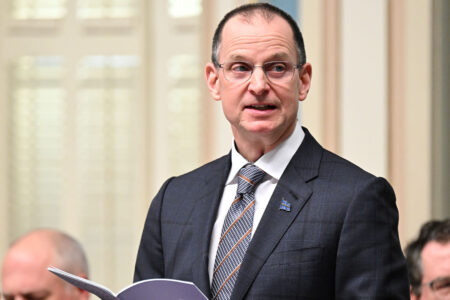
The election of Kathleen Wynne to lead the Ontario Liberals gives the governing party a narrow opportunity to renew its support with an electorate that has been shaken by a lacklustre economy, an imposing fiscal deficit and sour relations with the provincial teachers’ union. But to gain this support, the new premier is going to have to move quickly to put a new face on a government grown tired after nine years in power, while keeping the governing machine running and the party united.
What should we look to as indicators that Premier Wynne can execute crisply?
- Timely execution on administrative changes and personnel assignments;
- Early caucus and cabinet meetings to align priorities and mandates;
- Expeditious move to action on promises communicated during the leadership campaign. In Premier Wynne’s case, this means delivering on improved relations with teachers;
- Reconfirming or adjusting the approach to deal with Ontario’s deficit and restoring Canada’s most populous province to fiscal and economic health;
- Mobilizing Ontario Liberal Party members and volunteers and gear up for a state of readiness for an election at some point in the future;
- Strengthening communications to gain support for a re-energized government determined to deliver on their minority status until the need for an election is clearly warranted.
Here is some advice on how to get there, gleaned from the experience of previous transitions in Ontario and Quebec:
Prioritize. Any new leader has to quickly bridge any differences — and personal hard feelings — that emerged during the leadership race. The top priority must be to bring senior cabinet ministers and caucus leaders onside, ensuring they bring their weight to bear in support of the leader.
The second priority is to appoint a chief of staff and/ or principal secretary so that these officers can help the new premier with her policy priorities. Normally, a premier’s chief of staff is primer inter pares among the ministerial chiefs of staff, all of whom must be aligned and bring their contribution to governmental priorities. Others need to help with management of issues within the ambit of their ministries.
The third priority, given the inherent instability of a minority government, is to develop an electoral strategy and to mobilize the party executive and machine for an impending election. The Premier is also party leader and must take the lead in setting this in motion and approving the strategy as well as the electoral plan that will emerge.
Managing the office. Organizational change is a hallmark of new leadership, and any new leader is faced with choices of both structure and personnel. The most sensitive task is ensuring places for both those who supported the winning candidate and the personnel who served the previous leader with distinction.
There are always tensions after a leadership campaign. The choice in politics is to quickly resolve the situation and make quick decisions regarding personnel deployment. The Premier needs to find a balance between introducing the new faces needed to show change, while keeping solid, experienced and willing staffers. There will be people who have aspirations to cross to the new team, and those who are talented and have proven competence need to be retained — at least for some time. The Premier will need to have access to the knowledge and understanding of how to work with bureaucrats that only experienced political staff can bring. It is the public servants who will have to execute and administer her agenda.
How to harness this talent and assign responsibilities is a prerequisite to building a highly functional and cohesive team. But getting the staffing configuration right is matched by the other inescapable priority of a leader — whether or when to adjust cabinet assignments among serving ministers and aspirants to an executive post.
A high-profile change, or bringing in senior talent in support of an objective, sends a message. It can be as simple as selecting a person to negotiate or lead a file, or as complex as shuffling the players to breathe new energy and signal the seriousness of getting to a better relationship. Whatever the Premier decides, she has to move sure-footedly, decisively and in good time.
Complementing this is the question of whether to modify the machinery of government — the number and configuration of cabinet assignments. Remaking that machinery can sap energy and time within the system, thereby hindering the execution of priorities. It is more common to alter the structure or reallocate mandates once an election is held and a government is returned or a different political formation is elected to form a government.
In the case of the Liberal Party of Ontario’s transition, experience suggests that a new leader of a minority government needs to avoid complicated changes in the machinery of government, in favour of demonstrating an ability to deliver on policy promises and priorities outlined by the candidate during the leadership contest.
Functionality and focus. The internal workings of the premier’s office and the public service can provide signs of whether a premier will be successful, both politically and in delivering on policy. If the relationship is tense, it can get in the way of accomplishing objectives.
In our parliamentary system, the premier has two clearly distinct sources of advice and counsel. One is her deputy ministers, the senior public servants responsible for the administration and execution of mandates assigned to a ministry. While deputies formally report to their ministers, they are appointed by the premier and serve at her pleasure. Together with the minister’s chief of staff, they must consult about and consider the accountability obligations of the public service, while keeping in mind the legislative and other priorities of the government.
When the public service advice stream and the political service stream work together, the premier and the province are both well served. When they do not, more time is spent in arbitration and stress management, reducing the functionality and efficiency of the government of the day. This may sound banal. But in the case of the minority government, the overriding objectives are to maximize the use of the Premier’s time in the pursuit of her policy objectives, allowing her to build relationships and alliances and reducing the time she has to spend on administrative matters.
In this configuration the working relationship between the secretary to cabinet and the premier’s chief of staff is of paramount importance. I wish I could say that the dividing line between policy and politics is always clear, but at times that line is very wide indeed. So while many of the personnel decisions taken by Premier Wynne will be publicly visible and targets for debate and criticism, the real measure of success may depend on whether her chief of staff and the secretary to cabinet can develop a smooth working relationship. If they do, the Premier may be able to deliver on some of the promises and plans she has for Ontario, even in the short time available.
Photo: CP Photo







